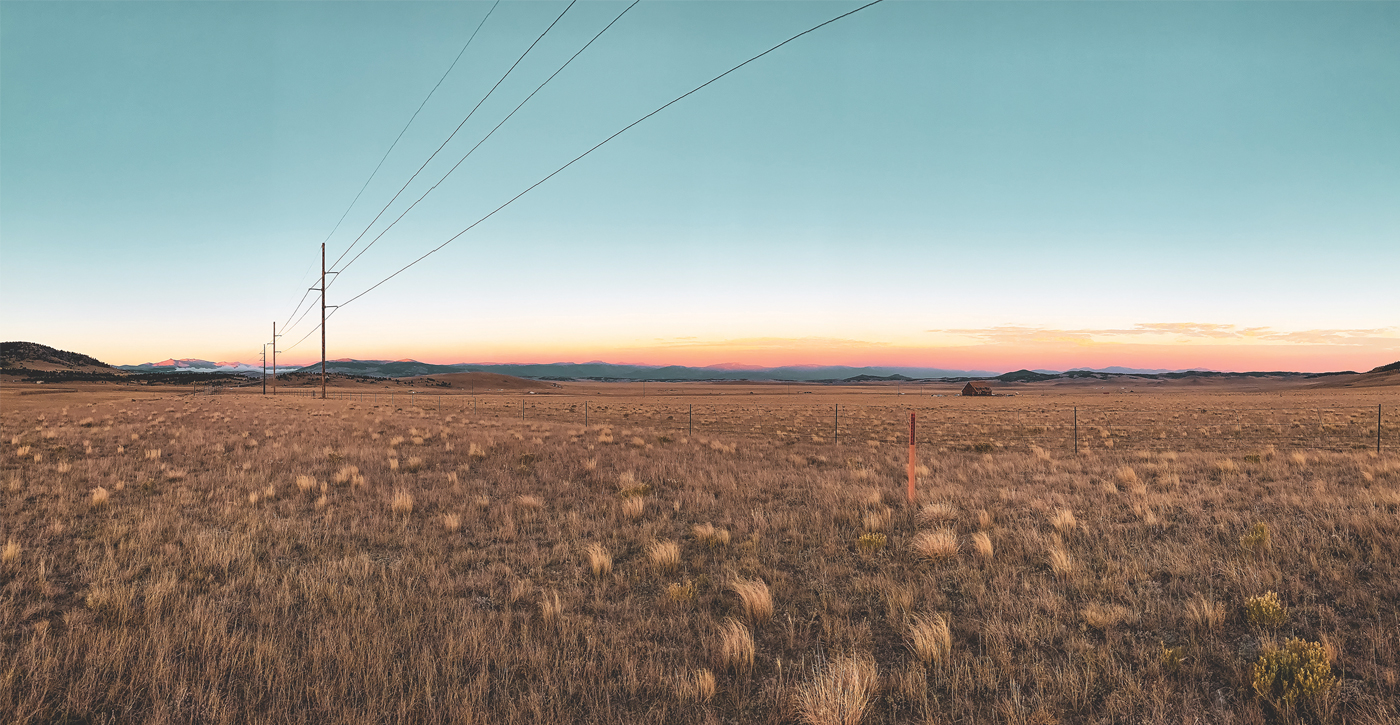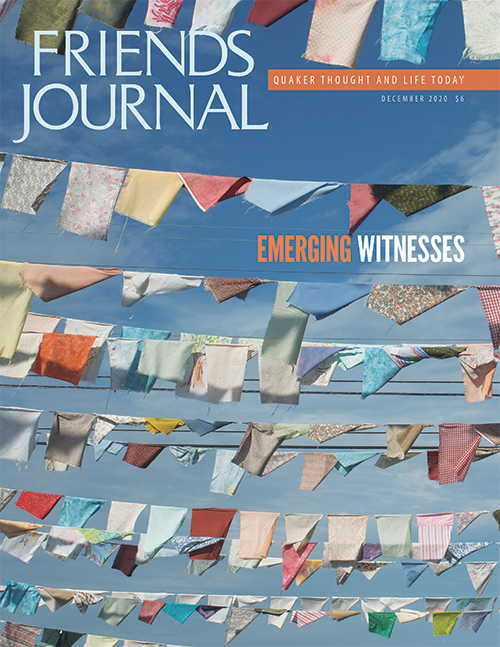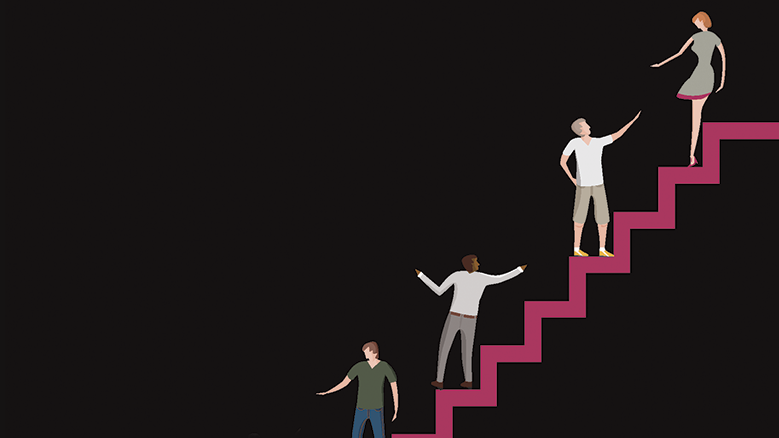An Emerging Spirituality of Aging
A large international group of interreligious spiritual seekers and teachers eagerly gathered a few years ago to hear Benedictine monk and respected spiritual teacher Brother David Steindl-Rast talk about the intricacies of authentic spiritual growth. After the crowd settled into anticipatory silence, Steindl-Rast went to the microphone, spoke for just one minute, and then sat down before a stunned audience.
In his unexpectedly brief message, Steindl-Rast insisted that learning to grow spiritually amounted to little more than practicing what we teach our children about crossing the street: stop, look, listen, and then go. Practice pausing long enough to hold at bay the frenetic rush of activity and the deafening noise that often inhabit our ordinary experience, and, in that privileged moment of suspended animation and engaging silence, look deeply and listen closely to what emerges in graced stillness. What emerges requires not only understanding but also action: this is what we call spirituality.
Stopping, however, can be either active or passive. We can freely and intentionally decide to stop, look, and listen, or we can be stopped in our tracks by what rather brashly dares to confront us with the unexpected and uncomfortable. Stopping invites our attention, while being stopped almost compels our attention.
When what emerges in silence consoles us, our path of action is often clear and effortless. But when we are stopped, we can either welcome it as an occasion for difficult discernment or withdraw because it appears to demand too much from us: it requires hard personal and spiritual work. In religious language, moments like these are seen as graced opportunities for conversion of heart.
During the past few years, I’ve stopped and been stopped by an acute yet increasingly peaceful sense of my own aging. I like to think I’m getting older, when, in reality, I’ve come to see myself as old. Being in that privileged space has also led me to look and listen and finally practice new ways of being spiritually alive.
Spirituality is developmental and ever evolving as we grow older: our core spiritual self remains consistent, yet its outward expression can and will change as we continue to grow into new ways of engaging life.
For example, as I’ve gotten older, the spiritualities that served me well in early adulthood and middle age no longer feel adequate or authentic. In my mid-70s I’ve started to stop, look, and listen for a renewed, perhaps a more “age appropriate,” way of living my spiritual vision. Developing an adequate spirituality of aging is also of particular importance simply because we are living substantially longer today than we did in the past.
The challenge in being older was more about cultivating deeper interiority, tending to the underexplored life waiting to be discovered beneath the surface of the flatlands, the “east of Denver” places in his soul.
Let me share a number of “stopping” and “being stopped” moments that have helped me understand, imagine, and integrate new ways of imagining spirituality as I’ve aged. During this maturing process, I’ve come to see that aging is as much about growth as it is about diminishment, gain as well as loss. Dilemmas like these once seemed contradictory but now strike me as mysteriously complementary.
A couple of years ago, I witnessed an interaction in an assisted living facility that stopped me in my tracks and still remains vivid and instructive for me. Two old men—not just older, but old—slowly, even somewhat warily, approached each other in an echoey, red-tiled hallway. One inched his wheelchair forward, while the other shuffled toward him pushing his walker. After a deep sigh, one man slowly looked up and said, “I think we’re getting there,” to which the other responded, missing a beat only for an even deeper sigh, “I think we’re there.”
Experience has taught me that getting older—“getting there”—is a process, while being old—“being there”—is a state of being. Getting older is like skating on thin ice with the theoretical understanding that the ice will someday give way. Being old or older, however, is when it’s no longer theoretical: the ice begins cracking and wobbling underfoot. As we age, we live the visceral tension between the two experiences: the process of getting older and the state of being old.
I once heard legendary Notre Dame University theologian John S. Dunne describe something he learned driving back to Indiana from California when he was in his 70s. After carefully navigating the twists and turns of narrow roads and climbing what seemed like endless ranges of saw-toothed mountains, he noticed how the topography abruptly changed east of Denver. The landscape there seemed irredeemably flat, endlessly dull, infuriatingly monotonous. He was stopped in his tracks and the insight hit him: he was looking at the rest of his life.
No longer would his life’s meaning come mainly from climbing mountains and conquering external challenges. The challenge in being older, he realized, was more about cultivating deeper interiority, tending to the underexplored life waiting to be discovered beneath the surface of the flatlands, the “east of Denver” places in his soul.
Accepting an invitation to engage intentionally in the interior work of the soul—fully engaging the contemplative dimension of our life—is perhaps the gift offered with particular urgency as we age. The invitation doesn’t come, however, as an either-or choice between mountains or flatlands; it comes, rather, as an opportunity to negotiate a new balance between the two, seeing them as partners rather than combatants.
As we accept the invitation to more deeply explore and engage life below the surface, we don’t jettison questions of productivity and contribution. Instead, we find ourselves on the lookout for fresh ways to be productive, to measure accomplishment, and to continue making significant contributions to our communities.

There are three characteristics of a spirituality of aging that have proved true for me. They are basically reflective footnotes on the images Dunne suggests between the challenges of life in the mountains and life in the flatlands. I offer them as suggestions that I hope will stimulate thinking and exploration.
First, as we age we need to learn how to grow down. Remember when we were children how adults seemed to delight in telling us—quite emphatically at times—to grow up? Sometimes they were impatiently and unrealistically hoping we’d resist the natural inclinations of childhood and conveniently turn into miniature adults. As we grew older, however, the message was really a hope that we would learn to be responsible and live up to our potential—learn how to climb mountains by tackling appropriate foothills first.
As we get older, however, we need to learn the contemplative art of growing down, of letting our roots grow more deeply into those reservoirs of previously untapped Spirit that lie below the surface of our lives. We find similar opportunities awaiting us to let our roots grow more deeply into the depths of our relationships, our communities, and the “of God” dimension of our lives. We are people of depth as well as height, and aging comes as an invitation to resist the temptation to live superficially by accepting the invitation to explore the “east of Denver” regions of our experience.
Second, we need to learn to empower others. When I was younger, I often and quite appropriately developed a sense of personal competency by taking on challenges and getting results—often with an exaggerated or even exalted sense of self-reliance. As I’ve aged I’ve felt a deeper call to use my accumulated wisdom to help others learn how to make vital contributions. This, it turns out, is an equally satisfying way of maintaining a sense of generativity, productivity, and accomplishment. Advising and coaching continue to emerge as fulfilling ways for me to contribute and to help bring out leadership in others. It’s a way of contributing by helping others learn how to lead.
Third, we need to learn how to let others care for us. Learning to grow down can also teach us greater patience with letting others do things for us or even take care of us. It’s a calling to greater mutuality, perhaps, and an opening to accepting help and care. Being able to ask for and accept help turns out to be less an assault on independence than a simple invitation to grow more deeply in the grace of mutuality.
As we get older, however, we need to learn the contemplative art of growing down, of letting our roots grow more deeply into those reservoirs of previously untapped Spirit that lie below the surface of our lives.
In the Sermon on the Mount, Jesus boldly announces that the truly blessed are those who are poor in spirit. It’s this way of living that perhaps best summarizes a spirituality of aging. Not only are we to reach out and give life to others in need, but, more to the point, we are also equally called to wait in hope for life to be given to us as pure gift.
An enigmatic story circulated among the early desert monastics about two beggars who met on the road. One beggar urged the other to follow him, confident that he knew where to find food. Like these beggars, we too find ourselves on a lifelong quest to find nourishment, what the Christian gospel calls “living bread.” As we age, this quest becomes increasingly more urgent yet consoling.
Silence of soul is a precondition for authentic poverty of spirit, and it is perhaps what allows us to stop, look, listen, and then offer life to others while also looking for life to emerge in the “east of Denver” places of our soul. This dull, flat landscape might just turn out to be the promised land, as we hope to age in wisdom and grace.






Comments on Friendsjournal.org may be used in the Forum of the print magazine and may be edited for length and clarity.